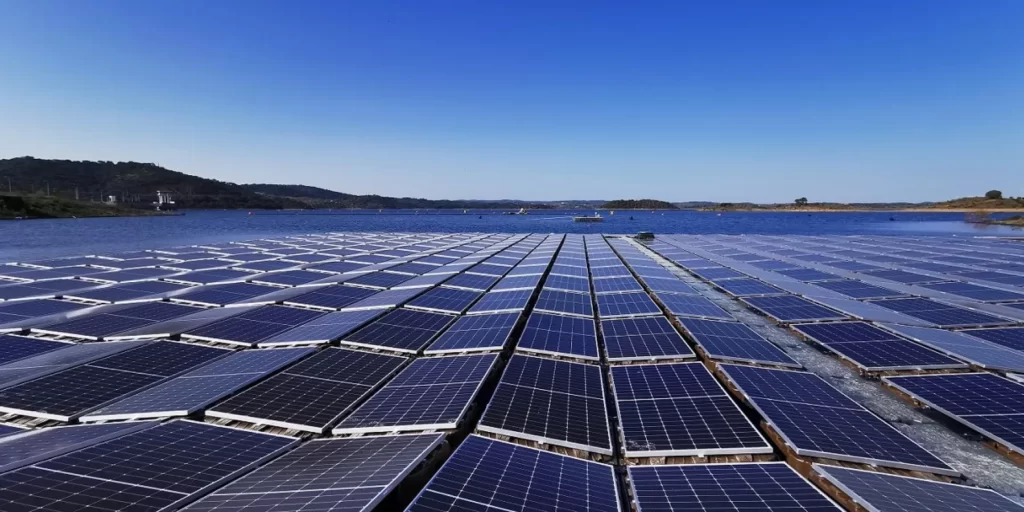The Alqueva Reservoir is the largest artificial lake in Western Europe, and the Alqueva Dam is located on the Guadiana River, one of the longest on the Iberian Peninsula. To be precise in Alentejo, in the south of Portugal, near the Spanish border.
The floating solar park, built by the energy giant EDP, is the size of four football fields. It will have 12.000 photovoltaic panels that will produce 7,5 gigawatt hours per year and will be paired with lithium batteries with the capacity to store 2 gigawatt hours. It will be able to supply energy to around 1.500 homes.
Floating, versatile, very useful
The interesting thing about floating solar farms on hydroelectric reservoirs is that they can be connected to existing connections to the electricity grid. Excess energy generated on sunny days can pump water into the lake: energy then stored for use on cloudy days or at night.
The Alqueva floating solar park in Portugal is an integral part of EDP's plan to reach net zero by 2030. Renewable energy, including hydropower, they now account for 78% of EDP's 25,6 gigawatts (GW) of installed capacity.

Portugal and floating solar parks, an ever stronger love
The Alqueva floating solar park itself will be expanded. More: doubled. Just last month the Portuguese government launched a plan to build a second floating solar park with 70 MW of installed capacity there.
It would be the third ever for the Portuguese: in 2017, EDP installed a pilot 840-panel floating solar park on the Alto Rabagão dam. It was the first project in Europe to test the combination of hydroelectric and solar energy. Apparently, a successful marriage.
Which will also help the success of a “divorce”: Portugal currently relies on Russia for approximately 10% of its natural gas.


